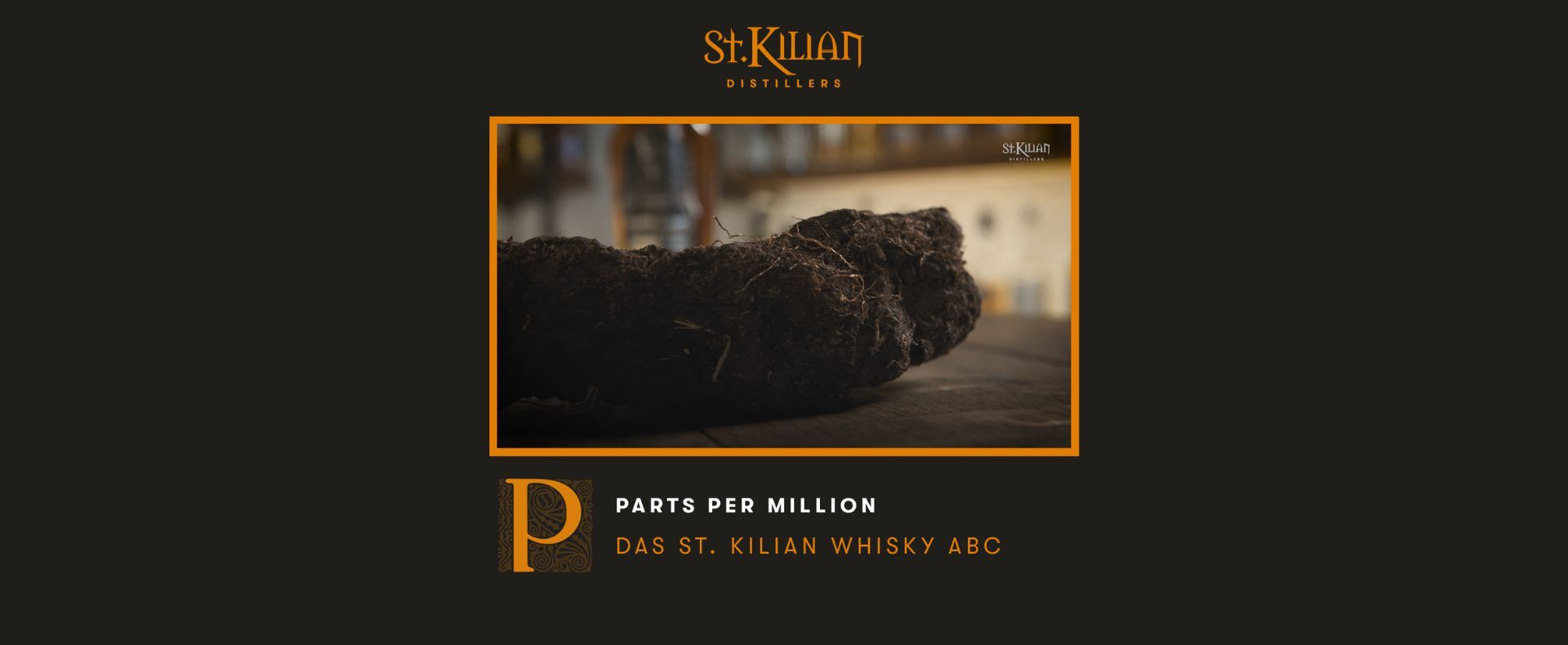P - as in PPM (parts per million)

In the world of smoky and peaty whiskies, connoisseurs often get excited when they hear talk of high numbers. The higher the number, the better. What these figures have in common is the unit with which they are usually indicated on the label of a whisky bottle, namely PPM.
What does PPM mean?
PPM is the abbreviation for "parts per million" and literally means "parts per million".
How can you imagine PPM?
If we look at 1 gram of a compound, for example salt, then one millionth of it, i.e. 1 microgram, which is just a few grains of salt, corresponds to exactly one PPM. Another example: Imagine a period of 11.6 days. One second in this very long period corresponds to one PPM. Or, to relate it to whisky: One drop from a 50-liter barrel filled to the brim with whisky also equals one PPM. PPM is therefore an almost unimaginably small unit.
What is specified in PPM?
The proportion of phenols in barley malt that has been kilned using smoke produced by burning peat is expressed in units of PPM. In most cases, the PPM indication on the label of a whisky bottle refers to the amount of phenols in the peat smoke-dried malt. However, the amount of phenols in the new make or bottled whisky can also be stated on the label, which is usually explicitly mentioned.
What are phenols?
Phenols are organic compounds with an aromatic six-membered ring of carbon atoms, to each of which a hydrogen atom is attached. One carbon atom of this six-membered ring replaces the hydrogen atom with an OH group consisting of an oxygen and a hydrogen atom. At room temperature, they present themselves as either solid or liquid compounds with a pervasive characteristic odor that can be described as smoky, phenolic, medicinal, brackish or even iodine-like, depending on the phenol.
How do the phenols get into the barley malt?
Burning dried peat produces phenols as well as other chemical compounds. These reach the moist barley malt with the peat smoke during the kilning process and, due to their properties, adhere to the outer shell of the malt grains, the husks, through adsorption. Phenols are also produced during the combustion of wood, for example oak or beech (see beech smoke malt). Their composition and the resulting aroma sometimes differ considerably from the phenols in peat smoke.
How can the quantity of phenols be determined?
There are two different analytical measurement methods to determine the content of phenols in barley malt in the unit PPM. The first is based on a color reaction and is known as the colorimetric method. The second is a much more precise analytical method known as HPLC (High Performance Liquid Chromatography), an abbreviation of the technical term "High Performance Liquid Chromatography".
What happens with the colorimetric method?
In this determination method, the phenols adhering to a defined quantity of peat smoke malt are removed using a suitable solvent and mixed with a color reagent. The resulting color is then analyzed using a measuring device (colorimeter). Using a calibration curve previously created under the same conditions with a known quantity of phenol, the value determined by the colorimeter can be used to draw conclusions about the phenol content of the peat smoke malt sample. However, the colorimetric method only makes it possible to determine the total phenol content in the peat smoke malt.
What does HPLC do for phenol determination?
Using an HPLC device, the central element of which is a thin stainless steel column with special groups inside that can interact with the various phenols, the individual phenols can be identified and their individual quantities determined in comparison to colorimetry. The HPLC method is therefore extremely precise and specific and is the standard analytical method in Scotland for the determination of phenols in peat-smoked malt.
Which analysis method is more accurate?
Although colorimetry is easy to use and inexpensive to determine the total amount of phenols in peat smoke malt, in most cases it provides values that are too low due to its lack of specificity. HPLC, on the other hand, is extremely precise, provides more accurate values and is the preferred analytical method, especially when a detailed characterization of the aroma profiles in peat smoke malt is required.
How does the phenol content change during whisky production?
Although phenols are extremely stable, their quantity decreases during the production and maturation of whisky. From milling and mashing to fermentation, double distillation and many years of maturation in wooden barrels, many phenols are lost. It is estimated that only around a third of the original phenol content in the malt is ultimately found in the matured whisky. Often it is even less.
Which method is used to determine the phenols in St. Kilian peat-smoked malt?
Until mid-2023, our Scottish peated smoked malt from Glenesk Maltings was analyzed using the colorimetric method and consistently showed a peat content of 54 PPM. The analysis method was then switched to HPLC, which is the more modern and standard analysis method used in Scotland. The more precise HPLC analysis method resulted in a total phenol content of 80 PPM for the same peat-smoked malt that we source from Scotland.